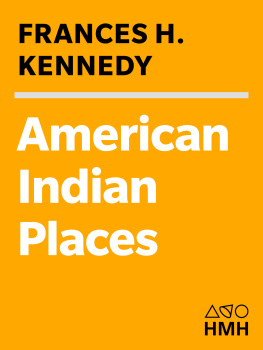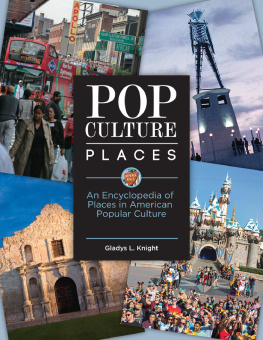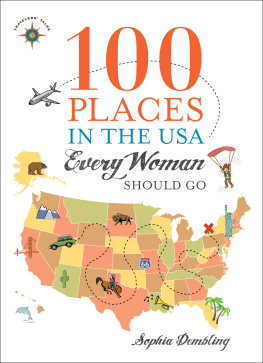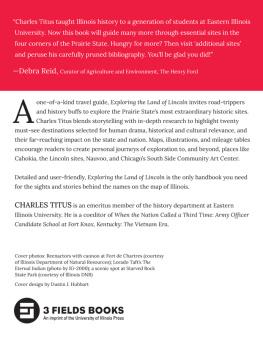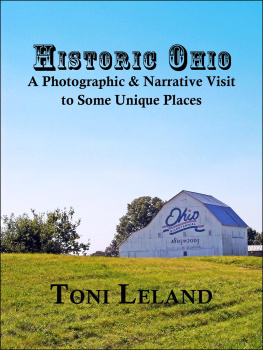Copyright 2008 by Frances H. Kennedy
All rights reserved
For information about permission to reproduce selections from this book, write to or to Permissions, Houghton Mifflin Harcourt Publishing Company, 3 Park Avenue, 19th Floor, New York, New York 10016.
hmhbooks.com
Library of Congress Cataloging-in-Publication Data
American Indian places : a historical guidebook / Frances H.
Kennedy editor and principal contributor.
p. cm.
ISBN-13: 978-0-395-63336-6
ISBN-10: 0-395-63336-2
1. Indians of North AmericaAntiquitiesGuidebooks. 2. Indians of North AmericaHistoryGuidebooks. 3. Historic sitesUnited StatesGuidebooks. 4. Sacred placesUnited StatesGuidebooks. 5. United StatesAntiquitiesGuidebooks. I. Kennedy, Frances H.
E77.9. A44 2008 973.0497dc22 2008013750
eISBN 978-0-547-52367-5
v3.1219
This book is dedicated to all American Indians and its proceeds to the National Museum of the American Indian
To the Reader
American Indian Places presents 366 places that are significant to American Indians. Each place is open to the public and provides information about that significance. The book does not include places that became significant after 1900. Because so many voices speak through the book, it is more than place-based history. The Native voices share their emotional and cultural responses to the places and provide insights into what they mean to Native people. Many of the Native authors also tell about their people today. The non-Native voices provide archaeological and historical information about the cultures that these places embody. Thanks to all of these voices, American Indian Places has become a way to learn about Indian peoples and cultures from a perspective grounded in the places they revere.
The places are organized in five geographic sections, determined by the homelands and subsequent movements of the peoples for whom the places are significant. Within each section, the places are presented in rough chronological order according to the period of their most intense significance. If the significance of a place is not limited to a specific time, the place is presented after one that is nearby geographically. The places are numbered continuously throughout the book, and each place is followed by the abbreviation of the state name, to facilitate locating them on the section maps.
People who know and revere the places wrote essays on 229 of them. I wrote the short entries for 137 of the places, with the generous assistance of people who know them well (any errors are my own). As place-based history, this book cannot, by its very nature, tell about American Indians as comprehensively as books such as the Encyclopedia of North American Indians or The People: A History of Native America. So the book begins with three essays that provide an overview of the history of American Indians prior to 1900. Additional essays throughout the text provide general information about Native peoples.
In
The royalties from the book will go to the National Museum of the American Indian in Washington, D.C. I am very grateful to the Dodge Jones Foundation, the Fund of the Four Directions, and the Weyerhaeuser Family Foundation for grants toward the research expenses of the book.
It has been a great pleasure to edit American Indian Places and to learn from the 279 people who wrote the essays. Without them there would be no book. I am very grateful to them. My thanks also to the hundreds of other authorities whom I consulted about these places. They were generous in guiding my research and providing information. There are too many names to list or thank individually, but my gratitude to them is profound. We could include only a few photographs of the places; many thanks to the photographers and to the people at public agencies who contributed them. I thank my friend Rick West for his wise counsel over the years it took to complete this book. I am grateful to Harry Foster, the books editor at Houghton Mifflin from the beginning until his death in 2007, and to Will Vincent, Lisa White, Peg Anderson, and Liz Duvall, who guided it wisely to publication. My thanks, as always, to Roger Kennedy, who helped and cheered and was with me on the great adventure in learning that is now this book.
Frances H. Kennedy
Washington, D.C.
September 2007
The National Museum of the American Indian: A Native Place in Washington, D.C.
W. Richard West, Jr.
O N S EPTEMBER 21, 2004, the Smithsonian Institutions National Museum of the American Indian opened on the National Mall in Washington, D.C., resoundingly establishing a Native place in the political center of the nations capital. Its significance as place is both literal and metaphorical.
As metaphor, the opening of this centerpiece building of the museum transcended, in profound ways, the very boundaries of the occasion. The 25,000 to 30,000 Native people who gathered for the occasion were commemorating much more than the opening of a museum. This international institution of living cultures of the Americas is more than just a new jewel in the illustrious crown of the Smithsonian, Americas renowned national cultural institution. The museums establishment at the head of the National Mall marked a turning point in the consciousness of the Americas regarding the centrality of Native peoples to the shared cultural heritage of all who call themselves Americans.
The National Museum of the American Indian is also quite literally a Native place in many ways. Planned over the course of a decade in direct consultation and collaboration with the Native peoples of the Americas, the physical place and, perhaps more important, its spirit derive directly from the substance and sensibilities of the first citizens of the Americas.
The tangible aspects of the building and its surrounding ecohabitat offer compelling evidence of a thoroughly Native impact. The presence of wetlands, native plants indigenous to the original site, and flowing water that greets and ushers visitors into the buildingall signal arrival in a very different place. The buildingwith its sweeping curvilinear and organic form, its earth-colored Kasota limestone cladding, its embrace of natural light in interior spaces, and its visually permeable skin joining inside and outsideemphasizes architectural accents and themes that directly reflect the institutions collaborative enterprise with Indian Country.
It is the intangible, however, that makes the National Museum of the American Indian a Native place rather than simply a physical space. The museum is about the long continuum through time of Native cultures, peoples, and communities. It embraces and empowers the capacity of Native peoples to represent and interpret themselves to all who visit and learn. This spirit, this combination of the tangible and the intangible, is what makes the Smithsonians National Museum of the American Indian a powerful and important Native place of the twenty-first century.
Places of the First Americans
David J. Meltzer
A LTHOUGH ARCHAEOLOGISTS HAVE NOT yet pinpointed just how long ago the first people came to America, we are certain they were here during the waning millennia of the Ice Age. These intrepid colonizers witnessed the retreating but still vast glaciers that once buried much of Canada and the northern reaches of the United States under ice. They experienced climates and environments far different from those of todaycooler overall, wetter in some places, drier in others. And they must have gazed across a landscape teeming with a zoo of giant mammals (megafauna)among them the mammoth, giant ground sloth, and saber-toothed catall soon to go extinct.

